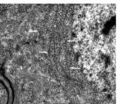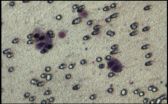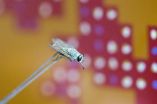(Press-News.org) Splice-Switching Oligonucleotide Therapeutics Is Promising New Method for Editing Gene Transcripts
New Rochelle, NY, July 17, 2014—In splice-switching, an innovative therapeutic approach, targeted oligonucleotide drugs alter the editing of a gene transcript to produce the desired form of a protein. Developments in this rapidly advancing field have already led to promising treatments for such diseases as Duchenne Muscular Dystrophy and spinal muscular atrophy, as described in an article in Human Gene Therapy, a peer-reviewed journal from Mary Ann Liebert, Inc., publishers. The article is available on the Human Gene Therapy website.
In "Development of Therapeutic Splice-Switching Oligonucleotides," Petra Disterer and coauthors from University College London, University of London, and Queen Mary University of London, UK, and Medical University of Warsaw, Poland, present an overview of the many possible therapeutic applications for splice-switching oligonucleotides. The authors discuss the design and chemical modification of these novel compounds to increase their stability and effectiveness, and emphasize the need to develop efficient solutions on a case by case basis.
"This is an emerging therapeutic area with promising clinical results," says James M. Wilson, MD, PhD, Editor-in-Chief of Human Gene Therapy, and Director of the Gene Therapy Program, Department of Pathology and Laboratory Medicine, University of Pennsylvania Perelman School of Medicine, Philadelphia.
INFORMATION:
About the Journal
Human Gene Therapy, the official journal of the European Society of Gene and Cell Therapy, British Society for Gene and Cell Therapy, French Society of Cell and Gene Therapy, German Society of Gene Therapy, and five other gene therapy societies, is an authoritative peer-reviewed journal published monthly in print and online. Human Gene Therapy presents reports on the transfer and expression of genes in mammals, including humans. Related topics include improvements in vector development, delivery systems, and animal models, particularly in the areas of cancer, heart disease, viral disease, genetic disease, and neurological disease, as well as ethical, legal, and regulatory issues related to the gene transfer in humans. Its sister journals, Human Gene Therapy Methods, published bimonthly, focuses on the application of gene therapy to product testing and development, and Human Gene Therapy Clinical Development, published quarterly, features data relevant to the regulatory review and commercial development of cell and gene therapy products. Tables of content for all three publications and a free sample issue may be viewed on the Human Gene Therapy website.
About the Publisher
Mary Ann Liebert, Inc., publishers is a privately held, fully integrated media company known for establishing authoritative peer-reviewed journals in many areas of science and biomedical research, including Nucleic Acid Therapeutics, Tissue Engineering, Stem Cells and Development, and Cellular Reprogramming. Its biotechnology trade magazine, Genetic Engineering & Biotechnology News (GEN), was the first in its field and is today the industry's most widely read publication worldwide. A complete list of the firm's 80 journals, books, and newsmagazines is available on the Mary Ann Liebert, Inc., publishers website.
Mary Ann Liebert, Inc. 140 Huguenot St., New Rochelle, NY 10801-5215 http://www.liebertpub.com
Phone: (914) 740-2100 (800) M-LIEBERT Fax: (914) 740-2101
Contact: Kathryn Ruehle, Mary Ann Liebert, Inc, (914) 740-2100, kruehle@liebertpub.com
Splice-switching oligonucleotide therapeutics is new method for editing gene transcript
2014-07-17
ELSE PRESS RELEASES FROM THIS DATE:
Preventing foodborne illness, naturally -- with cinnamon
2014-07-17
PULLMAN, Wash. – Seeking ways to prevent some of the most serious foodborne illnesses caused by pathogenic bacteria, two Washington State University scientists have found promise in an ancient but common cooking spice: cinnamon.
Recent findings published in Food Control journal online suggest Cinnamomum cassia oil can work effectively as a natural antibacterial agent in the food industry. The study results add to a body of knowledge that will help improve food safety and reduce or eliminate cases of food poisoning and related deaths.
In the study, the essential oil ...
Anti-tank missile detector joins the fight against malaria
2014-07-17
State-of-the-art military hardware could soon fight malaria, one of the most deadly diseases on the planet.
Researchers at Monash University and the University of Melbourne have used an anti-tank Javelin missile detector, more commonly used in warfare to detect the enemy, in a new test to rapidly identify malaria parasites in blood.
Scientists say the novel idea, published in the journal Analysis, could set a new gold standard for malaria testing.
The technique is based on Fourier Transform Infrared (FITR) spectroscopy, which provides information on how molecules ...
Acupuncture and moxibustion reduces neuronal edema in Alzheimer's disease rats
2014-07-17
Aberrant Wnt signaling is possibly related to the pathological changes in Alzheimer's disease (AD). Axin and β-catenin protein is closely related to Wnt signaling. Zhou Hua and his team, Hubei University of Chinese Medicine, China confirmed that moxibustion or electroacupuncture, or both, at Baihui (GV20) and Shenshu (BL23) acupoints decreased axin protein expression, increased β-catenin protein expression, and alleviated neuronal cytoplasmic edema. These findings suggest that the mechanism underlying the neuroprotective effect of acupuncture in AD is associated ...
Who are responsible for protecting against neuron and synapse injury in immature rats?
2014-07-17
Fructose-1,6-diphosphate is a metabolic intermediate that promotes cell metabolism. Whether it can alleviate hippocampal neuronal injury caused by febrile convulsion remains unclear. Dr. Jianping Zhou, the Second Affiliated Hospital, Medical College of Xi'an Jiaotong University, China and his team established a repetitive febrile convulsion model in rats aged 21 days, equivalent to 3 years in humans, intraperitoneally administered fructose-1,6-diphosphate at 1,000 mg/kg into the rat model. Results showed that high-dose fructose-1,6-diphosphate reduced mitochondrial ...
Chemokine receptor 4 gene silencing blocks neuroblastoma metastasis in vitro
2014-07-17
Chemokine receptor 4 is a chemokine receptor that participates in tumor occurrence, growth and metastasis in vitro and its expression is upregulated during neuroblastoma metastasis. Dr. Xin Chen, the Affiliated Hospital of Qingdao University, China successfully constructed chemokine receptor 4 sequence-specific small interfering RNA (siRNA) plasmids, transfected into SH-SY5Y cells and found that down-regulation of chemokine receptor 4 can inhibit in vitro invasion of neuroblastoma. This paper was published in Neural Regeneration Research (Vol. 9, No. 10, 2014).
Article: ...
Intrathecal bumetanide has analgesic effects through inhibition of NKCC1
2014-07-17
Accumulating evidence has demonstrated that the sodium-potassium-chloride co-transporter 1 (NKCC1) and potassium-chloride co-transporter 2 (KCC2) have a role in the modulation of pain transmission at the spinal level through chloride regulation in the pain pathway and by effecting neuronal excitability and pain sensitization. Dr. Yanbing He Zhujiang Hospital, Southern Medical University, China and his team found that intrathecal bumetanide could increase NKCC1 expression and decrease KCC2 expression in spinal cord neurons of rats with incisional pain. The authors presumed ...
Attenuated inhibition of neuron membrane excitability contributes to childhood depression
2014-07-17
Accumulating evidence suggests that the nucleus accumbens, which is involved in mechanisms of reward and addiction, plays a role in the pathogenesis of depression and in the action of antidepressants. Dandan Liu and her team, Bio-X Institute, Shanghai Jiao Tong University, China for the first time using electrophysiological method studied the signaling transduction pathway mediated by dopamine D2-like receptor in the medium spiny neurons in the core of the nucleus accumbens in the juvenile Wistar Kyoto rat model of depression. They concluded that impaired inhibition of ...
NYU research on persons w/ HIV/AIDS not taking medication and not engaged in care
2014-07-17
Regular attendance at HIV primary care visits and high adherence to antiretroviral therapy (ART) are vital for people living with HIV/AIDS (PLHA), as these health behaviors lead to lowered rates of morbidity and mortality, increased quality of life, and reducing the risk of HIV transmission to others. However, a large proportion of PLHA in the United States are not sufficiently engaged in care and not taking ART when it is medically necessary.
A new study, "HIV-infected individuals who delay, decline, or discontinue antiretroviral therapy: Comparing clinic- and peer-recruited ...
Eradicating fatal sleeping sickness by killing off the tsetse fly
2014-07-17
A Brigham Young University ecologist is playing a role in the effort to curb a deadly disease affecting developing nations across equatorial Africa.
Steven L. Peck, a BYU professor of biology, has lent his expertise in understanding insect movement to help shape a UN-sanctioned eradication effort of the tsetse fly—a creature that passes the fatal African sleeping sickness to humans, domestic animals, and wildlife.
Using Peck's advanced computer models, crews from the UN's Food and Agriculture Organization will know where to concentrate their efforts to eliminate the ...
Investing in sexual and reproductive health of 10 to 14 year olds yields lifetime benefits
2014-07-17
WASHINGTON -- Age 10 to 14 years, a time when both girls and boys are constructing their own identities and are typically open to new ideas and influences, provides a unique narrow window of opportunity for parents, teachers, healthcare providers and others to facilitate transition into healthy teenage and adulthood years according to researchers from Georgetown University's Institute for Reproductive Health who note the lack worldwide of programs to help children of this age navigate passage from childhood to adulthood.
An estimated 1.2 billion adolescents live in the ...







